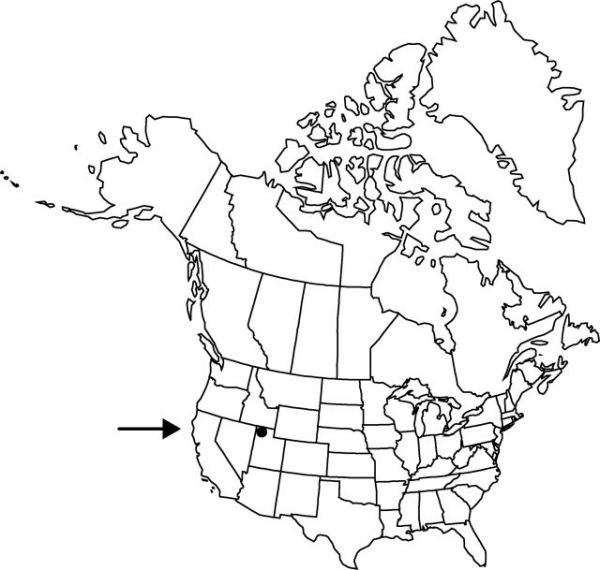Difference between revisions of "Allium passeyi"
Brittonia 26: 309, figs. 1, 4. 1974.
FNA>Volume Importer |
imported>Volume Importer |
||
| (6 intermediate revisions by 2 users not shown) | |||
| Line 6: | Line 6: | ||
|place=26: 309, figs. 1, 4. 1974 | |place=26: 309, figs. 1, 4. 1974 | ||
|year=1974 | |year=1974 | ||
| + | }} | ||
| + | |special_status={{Treatment/ID/Special_status | ||
| + | |code=E | ||
| + | |label=Endemic | ||
| + | }}{{Treatment/ID/Special_status | ||
| + | |code=C | ||
| + | |label=Conservation concern | ||
}} | }} | ||
|basionyms= | |basionyms= | ||
| Line 24: | Line 31: | ||
|distribution=Utah. | |distribution=Utah. | ||
|discussion=<p>Of conservation concern.</p><!-- | |discussion=<p>Of conservation concern.</p><!-- | ||
| − | --><p>Allium passeyi is known only from Box Elder County.</p> | + | --><p><i>Allium passeyi</i> is known only from Box Elder County.</p> |
|tables= | |tables= | ||
|references= | |references= | ||
| Line 33: | Line 40: | ||
-->{{#Taxon: | -->{{#Taxon: | ||
name=Allium passeyi | name=Allium passeyi | ||
| − | |||
|authority=N. H. Holmgren & A. H. Holmgren | |authority=N. H. Holmgren & A. H. Holmgren | ||
|rank=species | |rank=species | ||
| Line 47: | Line 53: | ||
|publication title=Brittonia | |publication title=Brittonia | ||
|publication year=1974 | |publication year=1974 | ||
| − | |special status= | + | |special status=Endemic;Conservation concern |
| − | |source xml=https:// | + | |source xml=https://bitbucket.org/aafc-mbb/fna-data-curation/src/2e0870ddd59836b60bcf96646a41e87ea5a5943a/coarse_grained_fna_xml/V26/V26_424.xml |
|genus=Allium | |genus=Allium | ||
|species=Allium passeyi | |species=Allium passeyi | ||
Latest revision as of 21:15, 5 November 2020
Bulbs 2–3+, not rhizomatous, ovoid, 1–2 × 1.2–2 cm; outer coats enclosing 1 or more bulbs, light brown, reticulate, fibrous; inner coats whitish to light brown, cells vertically elongate and regular or obscure. Leaves persistent, green at anthesis, 2–3, sheathing; blade solid, flat, ± falcate, 10–20 cm × 3–6 mm, margins entire. Scape persistent, solitary, erect, terete or ± winged-angled, mostly 10–20 cm × 1–2.5 mm. Umbel persistent, erect, compact, 8–27-flowered, hemispheric-globose, bulbils unknown; spathe bracts persistent, 2–4, mostly 1-veined, ovate, ± equal, apex acuminate to caudate. Flowers campanulate, 7–9 mm; tepals erect, light pink, narrowly lanceolate to lance-ovate, becoming callous-keeled, persistent and permanently investing capsule, margins entire, apex acuminate, inner shorter and narrower than outer, outer strongly keeled and gibbous at base; stamens included; anthers yellow; pollen yellow; ovary obscurely crested; processes 6, central, ± erect, rounded, minute, to 1 mm, margins entire; style linear, equaling stamens; stigma capitate, scarcely thickened, unlobed; pedicel 10–18 mm. Seed coat shining; cells smooth, each with minute, central papilla.
Phenology: Flowering Jun.
Habitat: Shallow, stony, lithosolic soil over dolomitic limestone, hilltops
Elevation: 1400–1600 m
Discussion
Of conservation concern.
Allium passeyi is known only from Box Elder County.
Selected References
None.
